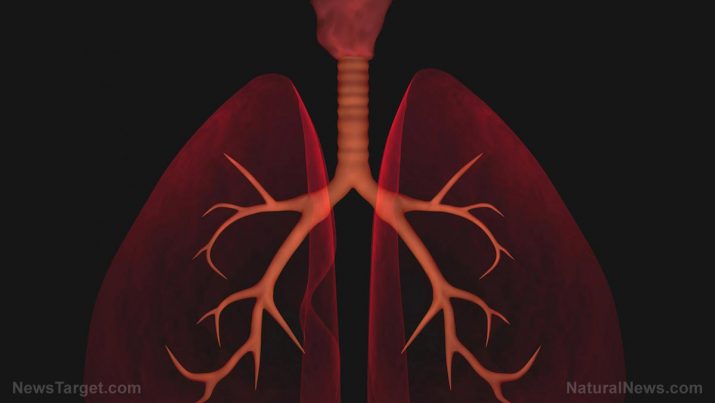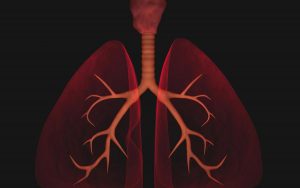
Burkholderia infection – causes, side effects and treatments at NaturalPedia.com
Wednesday, February 21, 2018 by Zoey Sky
http://www.naturalpedia.com/burkholderia-infection-causes-side-effects-and-treatments-at-naturalpedia-com.html

Burkholderia infection is caused by the Burkholderia cepacia bacteria. B. cepacia is an aerobic gram-negative bacillus native to various aquatic environments. An organism of low virulence, B. cepacia often colonizes fluids used in the hospital (such as irrigation solutions and intravenous fluids).
B. cepacia refers to a group of bacteria found in soil, dirt, and some plants (like onions.) Once the bacteria enters the body, it can infect other parts of the body. The bacteria usually infects the lungs. Infection in the lungs caused by B. cepacia may result in the deterioration of lung tissue and function, possibly resulting in death.
Healthy hosts are rarely infected by B. cepacia. The bacteria is not usually a pathogen in the ambulatory setting, but it may colonize or infect the respiratory tract of patients diagnosed with cystic fibrosis or bronchiectasis.
B. cepacia can also cause central venous catheter-related infections in cancer patients and those on hemodialysis. While B cepacianosocomial pneumonia has rarely been reported, especially in patients treated with fluoroquinolones and ceftazidime. There are also reported cases of skin and soft-tissue infections, surgical-wound infections, and genitourinary tract infections with B. cepacia.

Known side effects of Burkholderia infection
The known side effects of Burkholderia infection are similar to the symptoms linked with other diseases of the lungs like pneumonia and cystic fibrosis. These side effects may include:
- Coughing
- Difficulty breathing
- Fever
- Phlegm build-up/congestion
- Shortness of breath
- Wheezing
Body systems harmed by Burkholderia infection
Once the lungs have deteriorated enough, the lung function may cease. Once this happens, the lungs may be unable to supply the body with oxygen, and this can result in death.
Food items or nutrients that may prevent Burkholderia infection
Since B. cepacia can infect the respiratory tract of patients with cystic fibrosis, eating these foods and nutrients can help prevent Burkholderia infection:
- Antioxidants – Fruits and vegetables are full antioxidants, and they help fight off bacterial infection.
- Calcium – Sources full of calcium may help minimize your risk of osteoporosis, which is a concern for people with cystic fibrosis.
- Dairy products – Sources include high-fat yogurt, whole milk, and high-fat cheese.
- Fiber – Eating foods rich in fiber, such as bran flakes, whole wheat pasta, and barley, can help minimize the risk of intestinal blockages.
- Iron – Iron helps the body fight off infection and produces red blood cells that carry oxygen. Sources include liver, tuna, lamb, seafood, eggs, beef, and turkey.
- Protein – Sources include beef, chicken, eggs, fish, and soy. Protein can help prevent muscle loss.
- Salt – Individuals with cystic fibrosis “have saltier sweat,” and this can cause electrolyte imbalance and dehydration. East salty snacks and pickles and consume sports drinks to replace the salt lost while sweating.
- Zinc – Sources include kidney beans, beef, spinach, liver, eggs, and seafood. Zinc can help fight off infections.
Treatments, management plans for Burkholderia infection
B. cepacia can be resistant to a lot of common antibiotics. Treatment for Burkholderia infection must be made on a case-by-case basis.
B. cepacia may be susceptible to trimethoprim plus sulfamethoxazole (TMP-SMX), cefepime, meropenem, minocycline, and tigecycline. The bacteria has varying susceptibility to fluoroquinolones.
Where to learn more
- 10 brands of baby wipes recalled due to pneumonia-causing bacteria contamination
- Soil microbes are the immune system that protects plants, crops from disease
Summary
Burkholderia infection is caused by the Burkholderia cepacia bacteria. B. cepacia is an aerobic gram-negative bacillus native to various aquatic environments. An organism of low virulence, B. cepacia often colonizes fluids used in the hospital (such as irrigation solutions and intravenous fluids).
The known side effects of Burkholderia infection are similar to the symptoms linked with other diseases of the lungs like pneumonia and cystic fibrosis. These side effects may include coughing, difficulty breathing, fever, phlegm build-up/congestion, shortness of breath, and wheezing.
Once the lungs have deteriorated enough, the lung function may cease. Once this happens, the lungs may be unable to supply the body with oxygen, and this can result in death.
Since B. cepacia can infect the respiratory tract of patients with cystic fibrosis, eating foods rich in antioxidants, calcium, and fiber can help prevent Burkholderia infection.
B. cepacia can be resistant to a lot of common antibiotics. Treatment for Burkholderia infection must be made on a case-by-case basis.
B. cepacia may be susceptible to trimethoprim plus sulfamethoxazole (TMP-SMX), cefepime, meropenem, minocycline, and tigecycline. The bacteria have varying susceptibility to fluoroquinolones.
Sources include
Tagged Under: Tags: Burkholderia infection





